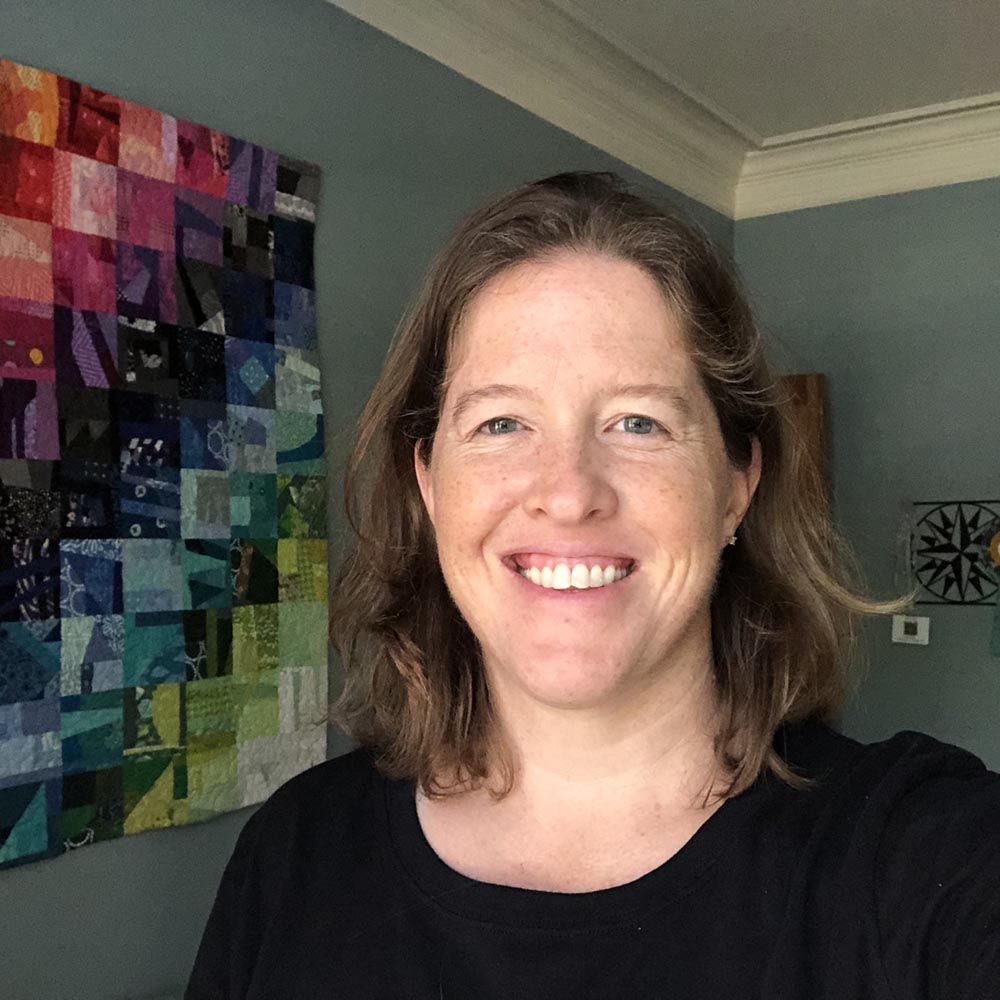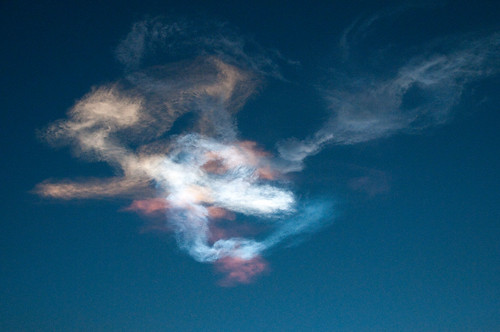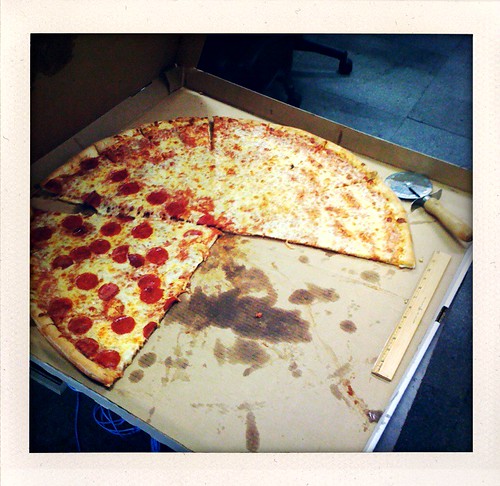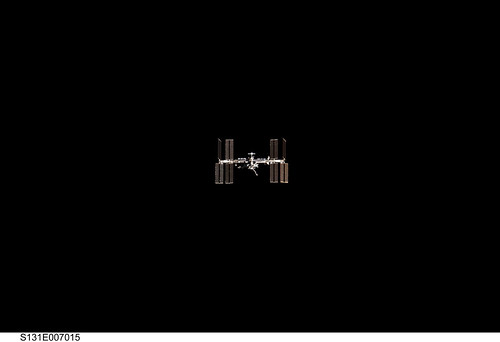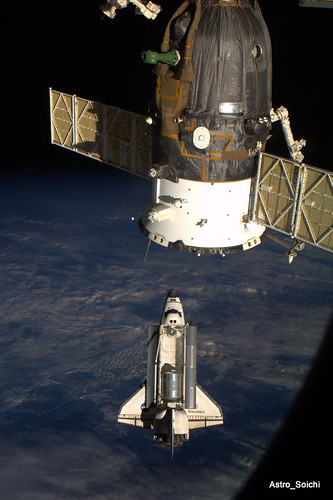STS-131 launched right on time early Monday morning. I woke up just long enough to flip on the TV and see it go. I knew many people who made the trip to Florida this time, and it sounds like the launch time — minutes before sunrise — was about as perfect as could be. Liftoff was in darkness, but the rising sun lit the exhaust plume of the engines once the shuttle got up high, and highlighted the dissipating solid rocket exhaust plume as well:
My first shift was rough, and I was fading fast when I got off console early Tuesday morning at 4:30 a.m. Thankfully I got plenty of sleep that day and was wide awake for the rendezvous on Tuesday night/Wednesday morning. But even before I talk about the rendezvous, I must talk about Nick, the rendezvous lead for this mission, who brought in what was seriously the largest pizza I have ever laid eyes on. Note the ruler that we put in the box for scale! The box was about 3 ft x 3 ft square, and the pizza itself was 28 inches. Holding a piece required two hands, and the thing fed about 20 people. We had guys — including a flight director — coming into the back room just to gawk at it. It was hilarious.
The rendezvous went absolutely swimmingly. If you have been following the mission, you may have heard that Discovery has had a complete failure of its Ku-band antenna. This antenna is used for two things: communication and radar. For communications, it’s the Ku-band that allows us to broadcast information at a high data rate, so while the failure is in no way life or mission-threatening, it’s a MAJOR headache. It’s the equivalent of your broadband internet going out, leaving you forced to use dial-up for the next two weeks. The shuttle can’t send down video and other files, and the ground can’t send up large amounts of data. Fortunately, now that we’re docked to the space station, we can use the ISS Ku-band antenna to send down the data that we need — like photos of the heat shield tiles, used to clear the orbiter for reentry.
The other function of the Ku-band is much more important to my little rendezvous world. During rendezvous, we use the Ku-band antenna as a radar. We power it up when we are about 150,000 feet away from the ISS, and it provides the orbiter’s distance and speed towards the ISS. This information lets us know exactly where we are, and is used by the navigation software to calculate and target burns that will continue our path towards docking. We have other sensors that we use, and we can (and did!) dock successfully without radar, but the loss of radar data was a concern. There had only been one mission until now — STS-92 in 2000, before my time as a Rendezvous Officer — that has had to dock without radar data, but fortunately it is a “sim case” that we practice regularly on the ground. The crew had actually practiced this specific case, radar fail, only two weeks ago! We knew they’d be ready to handle it without skipping a beat, and they were.
As it turned out, the other sensors performed so well that we barely noticed the loss of radar! It was totally awesome. The crew performed a star tracker navigation pass about 4 hours before docking. This is done on every flight, and it went very well. The star tracker is actually pretty self-explanatory — it tracks stars by measuring the angle of the star in its field of view. Four hours before docking, the orbiter is still 30-35 miles away and the ISS looks like a very bright star, which is why we’re able to use the star tracker! (See, I told you it was self-explanatory.)
Normally, we would begin looking at radar data about 3 hours before docking. Without it, we instead did something that we often do in simulations — we had the crew perform a second star tracker navigation pass. At first, it went well and we were getting good data, but suddenly the star tracker stopped tracking. The problem? The space station was getting too bright! By this time, the orbiter was less than 8 miles away, and the sun reflecting off the space station gets so bright (and the station is getting so big) that it confuses the star tracker. (If it had gotten even bright, the star tracker would have automatically closed it shutter to prevent damaging its sensitive equipment.) The solution? Wait until night, which in orbit is never too far away. About 20 minutes later, the sun set and we were able to resume taking data with the star trackers, which were now tracking a light on the back of the ISS. Every flight, we coordinate with the Russians to get that light turned on. But this was only the second time we’ve ever actually had to use it!
Our entire rendezvous trajectory ended up being about as perfect as you can get. There is a “radar fail correction burn” that’s built into the trajectory to protect for cases like this when we have no radar data and therefore are potentially more uncertain of our position relative to the ISS — and on the flight, it was zero. Zip, zero, nada. No correction burn needed, thanks to great data from the star trackers. Our primary sensor for proximity operations, the Trajectory Control Sensor (TCS) laser, locked onto the ISS shortly after that — it started tracking at a range of 7000 ft! That’s a few thousand feet farther away than it usually picks up! At that point, we were all happy campers and it was smooth sailing to docking.
Hooray for STS-131!
